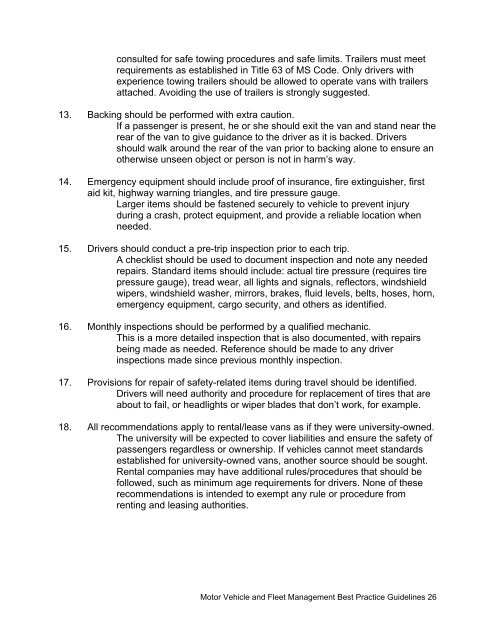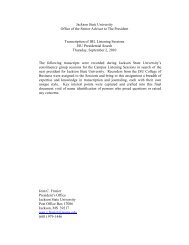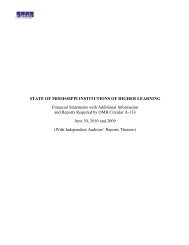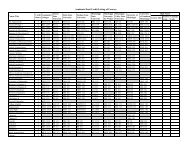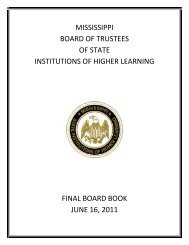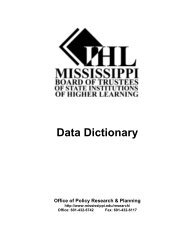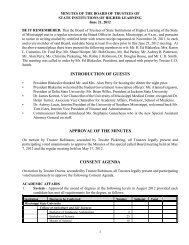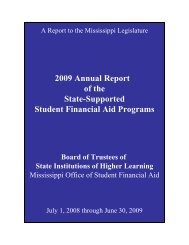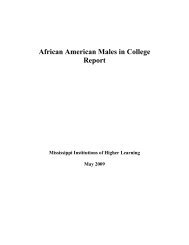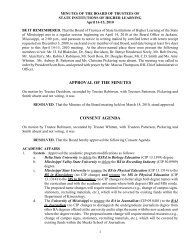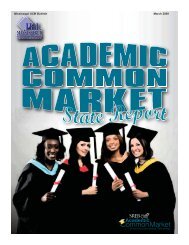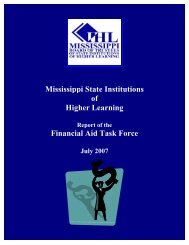Motor Vehicle And Fleet Management Best Practice Guidelines
Motor Vehicle And Fleet Management Best Practice Guidelines
Motor Vehicle And Fleet Management Best Practice Guidelines
You also want an ePaper? Increase the reach of your titles
YUMPU automatically turns print PDFs into web optimized ePapers that Google loves.
consulted for safe towing procedures and safe limits. Trailers must meetrequirements as established in Title 63 of MS Code. Only drivers withexperience towing trailers should be allowed to operate vans with trailersattached. Avoiding the use of trailers is strongly suggested.13. Backing should be performed with extra caution.If a passenger is present, he or she should exit the van and stand near therear of the van to give guidance to the driver as it is backed. Driversshould walk around the rear of the van prior to backing alone to ensure anotherwise unseen object or person is not in harm’s way.14. Emergency equipment should include proof of insurance, fire extinguisher, firstaid kit, highway warning triangles, and tire pressure gauge.Larger items should be fastened securely to vehicle to prevent injuryduring a crash, protect equipment, and provide a reliable location whenneeded.15. Drivers should conduct a pre-trip inspection prior to each trip.A checklist should be used to document inspection and note any neededrepairs. Standard items should include: actual tire pressure (requires tirepressure gauge), tread wear, all lights and signals, reflectors, windshieldwipers, windshield washer, mirrors, brakes, fluid levels, belts, hoses, horn,emergency equipment, cargo security, and others as identified.16. Monthly inspections should be performed by a qualified mechanic.This is a more detailed inspection that is also documented, with repairsbeing made as needed. Reference should be made to any driverinspections made since previous monthly inspection.17. Provisions for repair of safety-related items during travel should be identified.Drivers will need authority and procedure for replacement of tires that areabout to fail, or headlights or wiper blades that don’t work, for example.18. All recommendations apply to rental/lease vans as if they were university-owned.The university will be expected to cover liabilities and ensure the safety ofpassengers regardless or ownership. If vehicles cannot meet standardsestablished for university-owned vans, another source should be sought.Rental companies may have additional rules/procedures that should befollowed, such as minimum age requirements for drivers. None of theserecommendations is intended to exempt any rule or procedure fromrenting and leasing authorities.<strong>Motor</strong> <strong>Vehicle</strong> and <strong>Fleet</strong> <strong>Management</strong> <strong>Best</strong> <strong>Practice</strong> <strong>Guidelines</strong> 26


